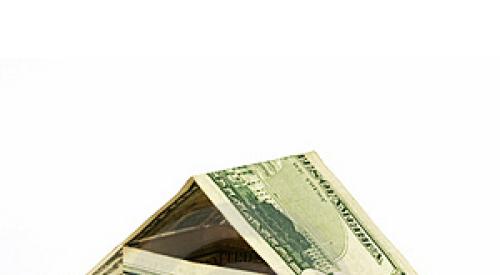|
In February's article, I shared some insight into seven common home-building quality issues, along with root causes and summary estimates of their financial costs. Now, let's get a better understanding of the broader financial impact that poor construction quality can have on your business.
First we'll take a look into the most prevalent of the seven quality issues, window and door installation, which was witnessed on 23 percent of the 100,000-plus site inspections Criterium Engineers has carried out. Specifically, we'll look at what happens when your windows and doors are not installed properly.
The Later the Detection, the Greater the Cost
 |
It's a clear afternoon, and your site supervisor is visiting homes throughout your Shady Pines community to check construction quality before he gives the trades the green light to install siding. He notices the windows and doors on several of your homes have not been installed correctly, leaving gaps for water to enter and damage drywall, flooring, etc. He stops work, gets the trade super to check on the issue and has him realign his team to go back and fix the problems — which could be 20 or more installations per home and on tens of homes just in that community.
Scenario No. 2 (Worse): It Becomes a Customer Service ProblemSay your site super is having an off day, or the few houses he visits in a community aren't the ones affected by the window and door issues. Six months down the line when many of your homeowners have moved in, problems are popping up, which could affect up to 23 percent of the Shady Pines community. Homeowners are pressing your customer service team to fix the issues; your representative investigates the root cause, coordinates the repairs, tries to appease the unhappy customers, and so on.
Scenario No. 3 (worst-case): Insurance Agents and Lawyers Get InvolvedYour Customer Service team has done its best, but the situation hasn't been resolved to your homeowners' satisfaction. First, your homeowner complaints turn into multiple warranty claims. What's the cost of this quality issue to your business in the near-term, and longer-term, given residual annual premium price hikes? Some homeowner claims turn ugly and end up in lawsuits.
What are your resulting legal costs and possibly even litigation/punitive damages? Liability costs rise accordingly.
The Ripple Effect: Impact on Your People and ReputationNo matter when the issue is identified it will affect two other areas you may not already have considered.
MARKETING AND SALES
Word gets around the neighborhood, your reputation gets tarnished, you end up with lower referrals and, potentially, lower home sales. This can have tremendous impact on your brand value. For many mid-size builders, your brand equity is a major component of your company's financial value — especially in a time when you may want to sell your business. If you're a giant, Wall Street-driven public home builder, poor public perception or "newspaper liability" can negatively affect your stock price.
HUMAN RESOURCES
You start to lose your best employees because they're tired and are losing pride in your company. You now have to find and hire new team members, which by HR experts' estimations can ultimately cost your business up to three times the salary for each manager lost.
Approaches to Calculating CostIt's a safe assumption that most production builders' superintendents spend as much as half of their time on quality-related issues. How many supers do you have? If you improve quality, how much money can you save? There are several approaches to calculating your cost and using quality to increase your bottom line.
Ed Caldeira, president of Caldeira Quality, has studied wasteful spending and has used an interactive worksheet to show how a home building company with four communities in progress was creating the equivalent of approximately 22 full-time employees (FTEs) of wasted resources. (Check out his analysis in the online version of this article at www.HousingGiants.com.) What's the approximate cost of each person? If we assume $30,000–40,000/year of fully loaded cost, that's between $7 million to $10 million down the drain.
Caldeira has noted a good cost-estimating program can find internal quality costs to be 2 percent to 4 percent of sales, with trade contractor quality costs adding 8 percent to 12 percent.
Turning a Negative into an OpportunityIn this next generation of home building, the winners are going to be the companies that focus on operational excellence.
In my next article, we'll explore further how a focus on achieving higher quality through process mapping can help you take your business to the next level and put a lot more money to your bottom line.
| Author Information |
| Michael Dickens is the CEO of BuildIQ, which provides online training on best practices in home building. |












